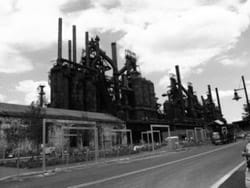 A couple of weeks ago, I returned from what was the first of two pilgrimages that I have been feeling called to make this summer in honor of our collective military dead. As an ancestor worker, I speak specifically for the military dead.
A couple of weeks ago, I returned from what was the first of two pilgrimages that I have been feeling called to make this summer in honor of our collective military dead. As an ancestor worker, I speak specifically for the military dead.
Of course, I honor my own ancestors (a lot), and my lineage ancestors, and in public ancestor rites, our collective ancestors, but over and above that, I also have specific obligations to the military dead. When the opportunity presented itself recently to travel to Richmond, VA, I decided to also stop at Gettysburg and Fredericksburg in order to deepen my work with the military dead by honoring those who died in the American Civil War, a war that cost more American lives than all other wars in which Americans were involved combined.
I will not talk about the causes or the impact of the Civil War. I shall leave that to better historians than I. I am not writing now as a historian. Nor was I journeying to honor the causes or ideologies behind this (or any conflict); rather, I was journeying to honor the courage, terror, sacrifice, and service of the men and women who died in this war.
That is the nature of working with the military dead. It is not the conflict we honor. It is not one side or the other. It is the very human service of the men and women who died. It is their suffering, terror, courage, and sacrifice out of which we—whether we like it or not—have been born. It is right and proper that we engage with them. Since I live in the US, and this opportunity arose, I decided to take it, even though until this point, I'd never felt any particular or personal connection to the Civil War or its dead.
 So, my travel companions and I decided to stop first at Bethlehem, PA (one of my friends and travel companions was a photographer and she wanted to get photographs of the Bethlehem Steel plant) and then Gettysburg before heading to Fredericksburg, Spotsylvania, and finally Richmond. We began by following the Hudson River from our little town in upstate New York, through the Delaware Gap, and down to the historic Moravian settlement in Bethlehem. It was a beautiful drive and I figured I could kick back and relax until we hit Gettysburg, when my own obligations to the dead would begin.
So, my travel companions and I decided to stop first at Bethlehem, PA (one of my friends and travel companions was a photographer and she wanted to get photographs of the Bethlehem Steel plant) and then Gettysburg before heading to Fredericksburg, Spotsylvania, and finally Richmond. We began by following the Hudson River from our little town in upstate New York, through the Delaware Gap, and down to the historic Moravian settlement in Bethlehem. It was a beautiful drive and I figured I could kick back and relax until we hit Gettysburg, when my own obligations to the dead would begin.
We arrived mid-morning in Bethlehem and first drove to the Moravian district. This historic district was a lovely surprise. The Moravians are one of the oldest Protestant Christian religious sects in the United States and they founded the town of Bethlehem in the mid-eighteenth century. Many of the colonial era buildings with their unique Moravian architecture and quaint walkways still exist and give the historic district in Bethlehem a unique and visually attractive flavor.
For the average American, however, that rich Moravian history is not what Bethlehem is most known for; for the average person, Bethlehem is the site of what was once one of the largest steel mills in America, making it a one-time center of American industry and a hub of production and trade for more than a century.
According to a 2004 article in Fortune, this steel plant, first founded in 1857, built over a thousand warships in World War II, the Golden Gate Bridge, and supplied the steel for every tunnel and bridge between New Jersey and New York. In doing so, Bethlehem Steel helped sustain America's growing economy and place as an industry leader. That same article then goes on to detail its decline and ultimately its closing in 2003.
 What it didn't detail was the desperation and hard work of every single person who spent his life culling out a living there. I found out very quickly that the steel plant itself remembers, and the moment I saw it looming on the horizon as we left the Moravian district, I knew I was in trouble.
What it didn't detail was the desperation and hard work of every single person who spent his life culling out a living there. I found out very quickly that the steel plant itself remembers, and the moment I saw it looming on the horizon as we left the Moravian district, I knew I was in trouble.
I hadn't expected to have any type of emotional or spiritual response to this place. I was going on a journey to honor a specific subset of military dead. I knew about Bethlehem Steel and its onetime importance, but had no particular personal connection to anyone who had ever worked there. It never occurred to me—and being an animist it should have—that the spirit of the plant itself might have something to teach me.





